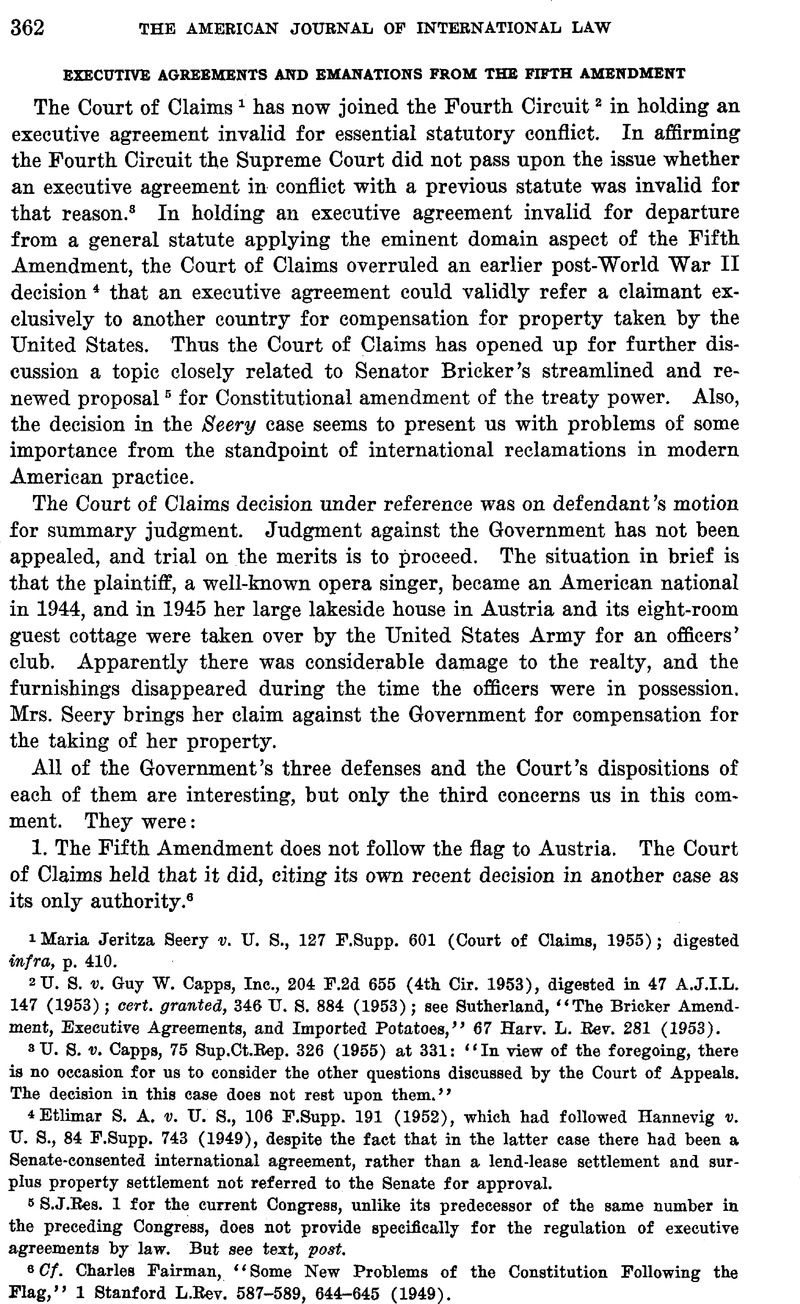Published online by Cambridge University Press: 30 March 2017

1 Maria Jeritza Seery v. U. 8., 127 F.Supp. 601 (Court of Claims, 1955); digested infra, p. 410.
2 U. S. v. Guy W. Capps, Inc., 204 F.2d 655 (4th Cir. 1953), digested in 47 A.J.I.L. 147 (1953); cert, granted, 346 U. S. 884 (1953); see Sutherland, , “The Bricker Amendment, Executive Agreements, and Imported Potatoes,” 67 Harv. L. Rev. 281 (1953)CrossRefGoogle Scholar.
3 U. S. v. Capps, 75 Sup.Ct.Rep. 326 (1955) at 331: “In view of the foregoing, there is no occasion for us to consider the other questions discussed by the Court of Appeals. The decision in this case does not rest upon them.”
4 Etlimar S. A. v. U. S., 106 F.Supp. 191 (1952), which had followed Hannevig v. U. S., 84 F.Supp. 743 (1949), despite the fact that in the latter case there had been a Senate-consented international agreement, rather than a lend-lease settlement and surplus property settlement not referred to the Senate for approval.
5 S.J.Res. 1 for the current Congress, unlike its predecessor of the same number in the preceding Congress, does not provide specifically for the regulation of executive agreements by law. But see test, post.
6 cf. Fairman, Charles, “Some New Problems of the Constitution Following the Flag,” 1 Stanford L.Rev. 587–589, 644–645 (1949)CrossRefGoogle Scholar.
7 The cases in note 4 supra apparently did not involve either citizens or residents of the United States. Moreover, the Fifth Amendment is not limited to citizens but covers persons subject to the jurisdiction of the United States. Quaere: including those in occupied areas
8 It may, however, be in effect ratified by Congress as was the case of the Yugoslav Agreement under the International Claims Settlement Act of 1949 (81st Cong., 1st Sess., 64 Stat. 12).
9 Cf. McDougal, Myres S. and Lane, Asher, “Treaties and Congressional-Executive or Presidential Agreements: Interchangeable Instruments of National Policy,” 54 Yale L.J. 186–189 (1945)Google Scholar.
10 Consult Mathews, Craig, “The Constitutional Power of the President to Conclude International Agreements,” 64 ibid, passim and 387 (1955)Google Scholar.
11 Sei Fujii v. State of California, 38 Cal.(2d) 718, 242 Pac.(2d) 617 (1952), 46 A.J.I.L. 559 (1952). See Fairman, “Finis to Fujii,” Ibid. at 682.